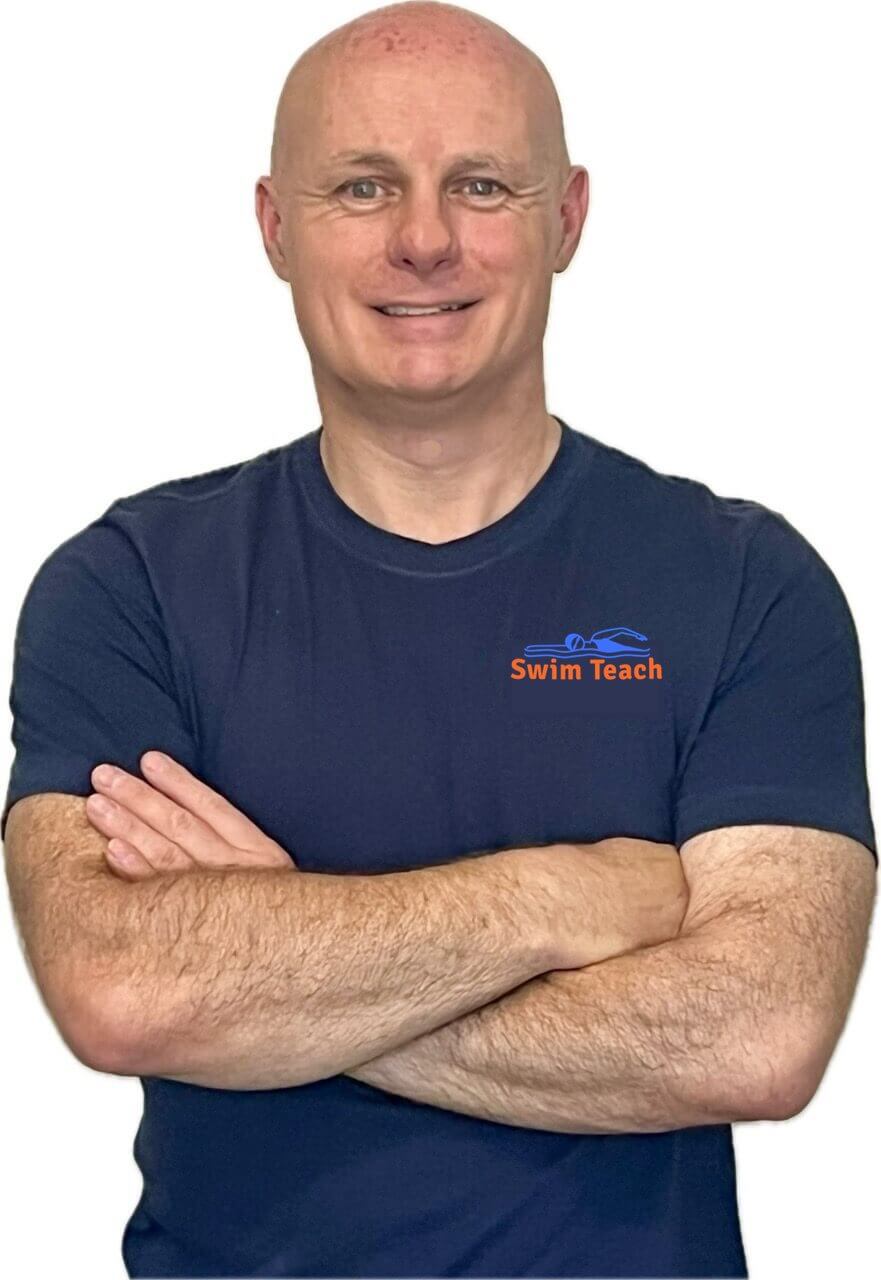- Swim Teach Home
- teach your kid to swim
How To Teach My Kid To Swim?
You're in the pool having fun while asking yourself, 'How can I teach my kid to swim?'. As a parent, you want your child to be safe, happy and confident in and around water. Taking them to the swimming pool is the best start, but how can you get the most out of them when you're in the water?
Read on and discover the best and easiest method to teach your child to swim.
The best way of teaching your child to swim is to use games and activities they will have fun playing. By letting them play, they become relaxed and at ease with the water. If you focus their games around some basic swimming skills, they will grow in confidence and learn the basics of swimming at the same time.
Click here to discover my book Teach Your Child To Swim Through Games and Play.
How can I teach my kid to swim using games?
Keep to the essential basics of learning to swim and turn them into a games.
Discover the essential swimming skills and games to use to teach them.
1. Moving around and getting used to the water
During the early stages of learning to swim, it is essential that children get used to the water slowly and gradually and, to a certain degree, at their own pace. Simple movements through the water, such as walking or sliding their feet, are excellent confidence builders. Children should be encouraged to move around using their arms and hands whilst walking to get a ‘feel’ for the water.
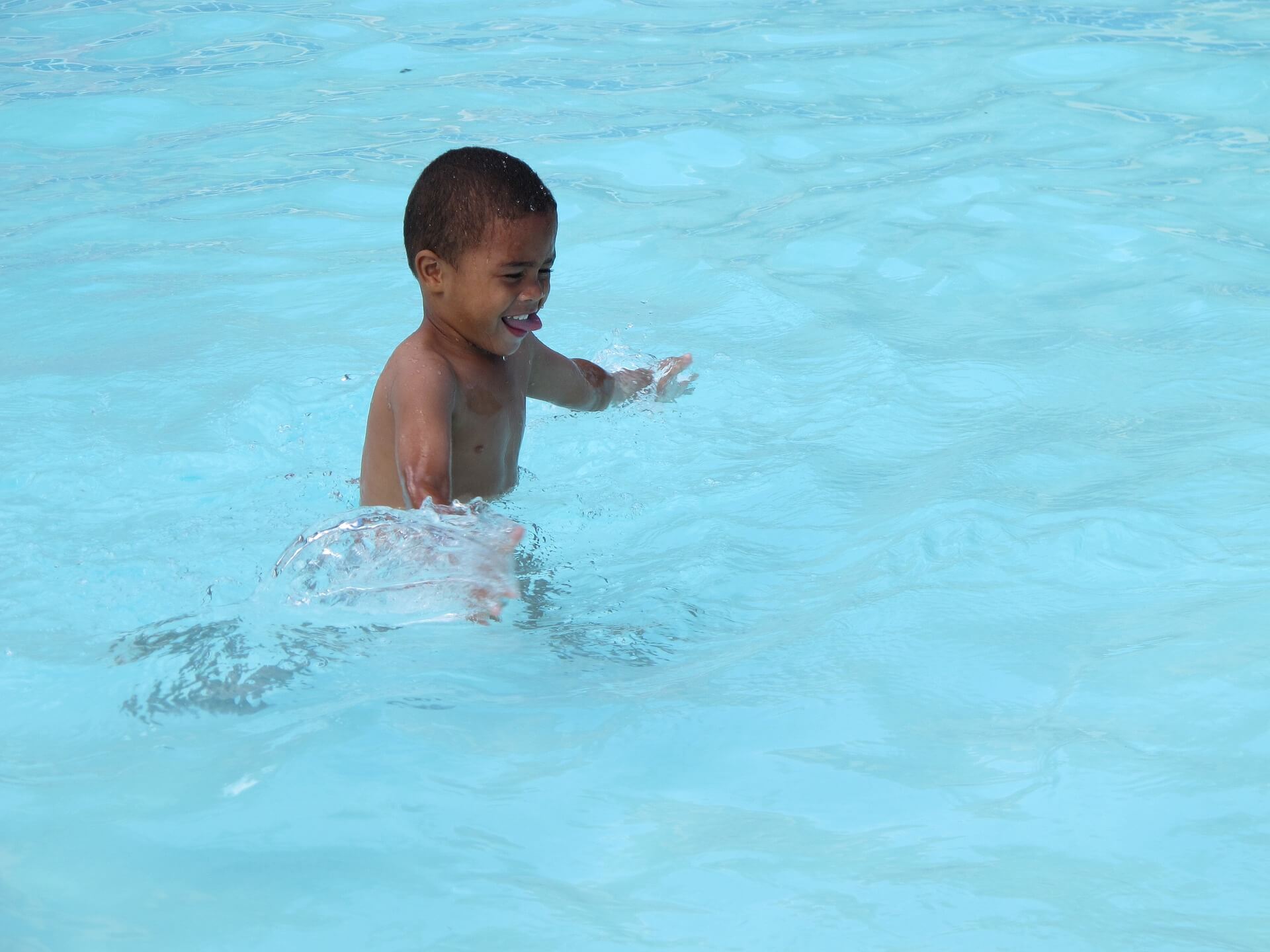
Some children may require floats or buoyancy aids to support them while moving through the water and it will be more common in the nervous child. Buoyancy aids should be discouraged as soon as confidence builds before they become dependent on them.
Click here for some fun and easy games that teach your child to swim.
2. Breathing
When getting used to the water and learning to swim, the ability to breathe can be a fear that holds children back. You want your child to become a confident, competent swimmer, so they need to be able to breathe out in the water, control their breathing and be comfortable with water around their face, mouth, and nose.
Teach your child to hold their breath
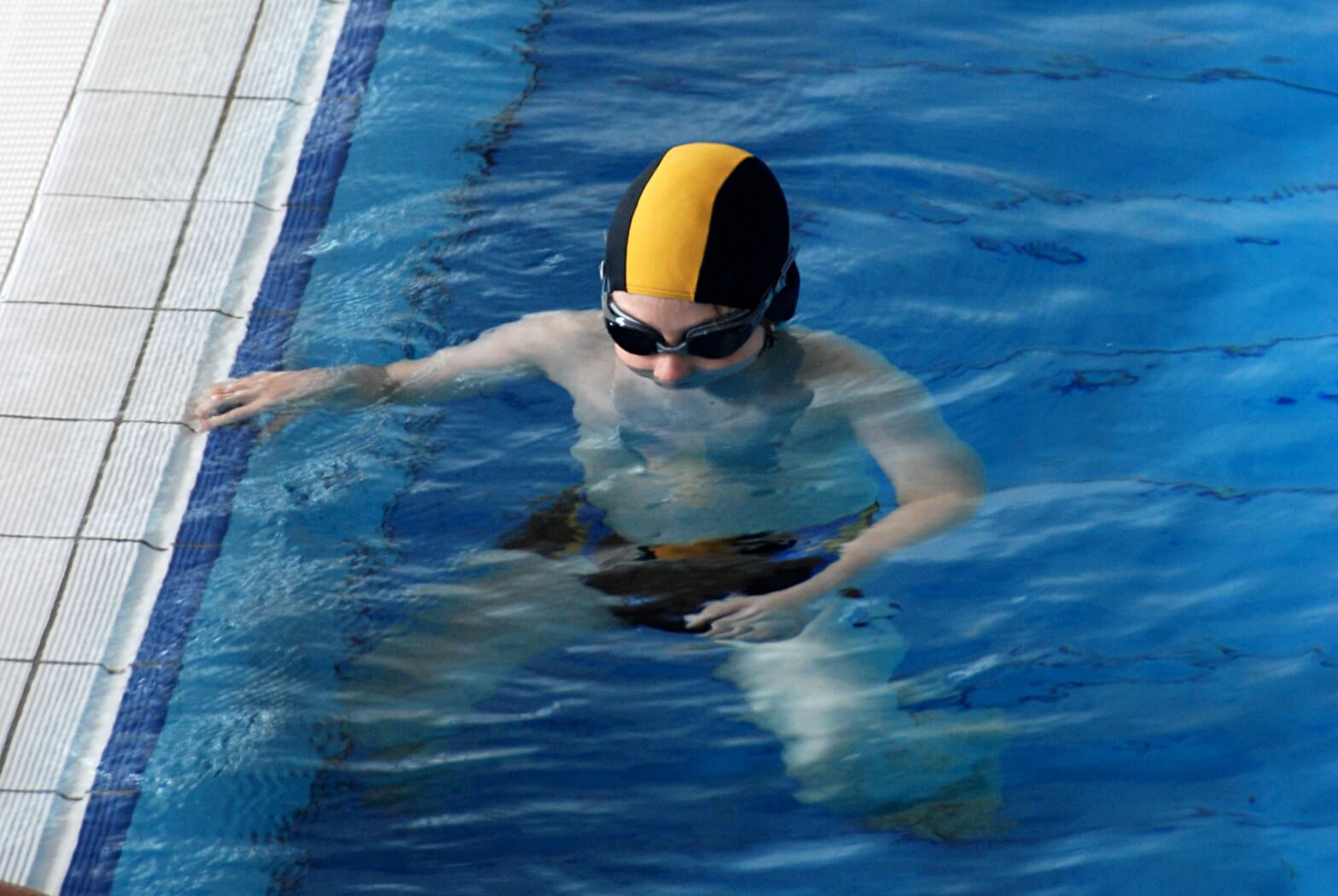
If holding their breath is difficult for your child, have them pretend they are about to blow out the candles on their birthday cake. Explain and demonstrate that they take a deep breath before they blow them out. Show them what this looks like, then explain that they only have to breathe in, not blow out. Exaggerate your demonstration by taking a huge deep breath, puffing out your chest and pointing to your tightly closed mouth to show that you are ‘holding it all in’.
Click here for some DIY swimming games that teach your child to swim.
3. Floating
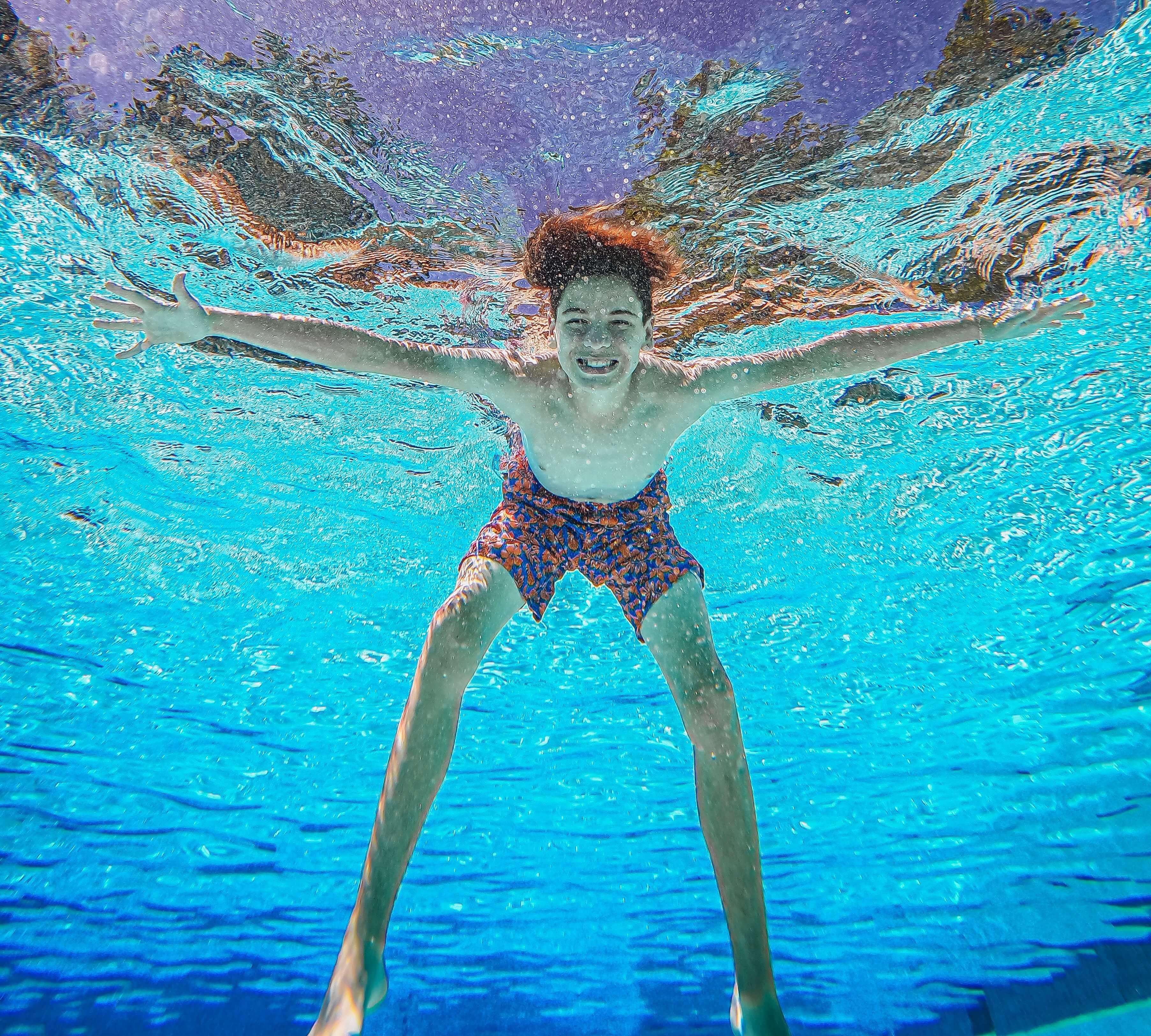
It is typical for beginners who fear water to think that the water is pulling them down. As a parent or carer, showing your child that the water is trying to support them is essential. The human body does not sink like a stone. Those that do not naturally float usually sink slowly and gradually.
So with that in mind, we must encourage children to move their arms and legs to help the water support them. Those movements can be very subtle and small, and they may have to be more significant movements to help generate some momentum.
Either way, you must encourage your child to do their bit to help the water support them.
Click here to discover my book Teach Your Child To Swim Through Games and Play.
4. Submerging
The ability to submerge the face is arguably one of the most critical stages of learning to swim.
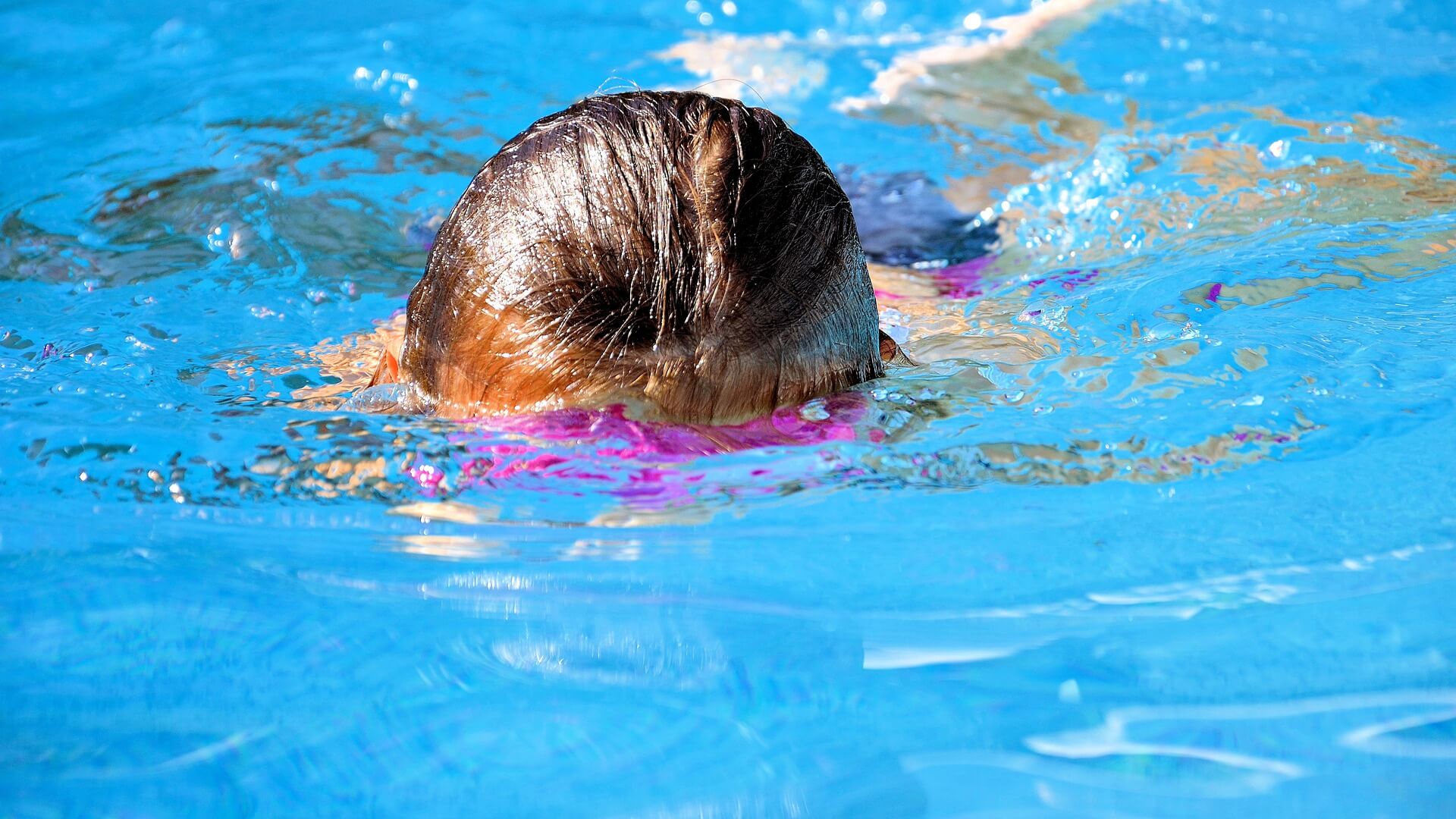
Water immersion for the first time is a new experience for many individuals, and fear, lack of confidence or uncertainty are normal feelings. If your child shows any of these feelings, it is essential not to force them into anything. Some children will find getting their face wet and submerging easy, but it will be terrifying for others. You know your child better than anyone, but a gentle and gradual approach is needed if they are anxious or fearful.
Click here for some games that will help you to 'teach my kid to swim'.
5. Gliding
Gliding, from a swimming point of view, is floating through the water, either at the surface or underwater, without assistance or movement from the arms or legs. It usually begins with a forceful push from the poolside or solid edge to generate some propulsion.
A streamlined body shape is essential for a glide to gain and maintain some distance.
For a glide through the water to be efficient and effective, hands and feet must be together to create a pointed streamlined shape. This will allow the body to cut through the water easily. If your child’s hands and feet are apart, their body shape will be wide, creating resistance and making the glide ineffective.
6. Kicking their legs
The alternating leg kick for front paddle should be relaxed and continuous. The kick should originate from the hips so the whole leg performs the kick, and the legs move up and down with a slight bend in the knees and relaxed ankle joints. Legs should remain together with toes pointed throughout the kicking action.

Encourage your child to ‘kick with floppy feet’ so that their ankles remain relaxed and their feet kick with a flipper-like action. Propulsion comes from the downbeat of the kick, so teach your child to kick downwards using ‘the laces on their shoes’.
Click here for some DIY swimming games that teach your child to swim.
7. Pulling with their arms
The arm pull technique for front paddle is a continuous, alternating action with fingers closed together. The movement almost always occurs under the surface of the water, unlike front crawl or freestyle arm technique.
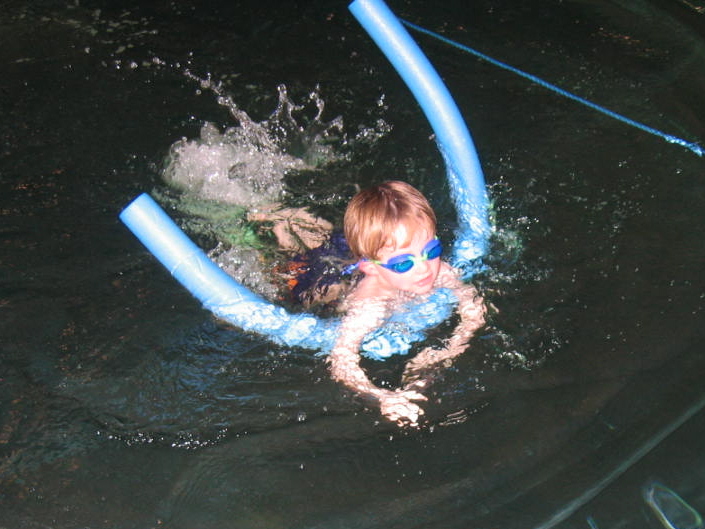
Encourage your child to ‘reach and pull’ to teach them to stretch their arms forward and pull back with each arm pull. Their fingers should be closed together and wrists firm to help form a ‘cup’ or ‘scoop’ shape that they can use to pull the water towards them, generating propulsion.
Download My Games and Play Ebook
Discover 60 games and activites that ensure your child has fun in the pool and teaches them the crucial basics of swimming at the same time.
Click here to discover my book Teach Your Child To Swim Through Games and Play.
Make It Easy For You Kids To Learn To Swim
Download your copy and discover the power of play!
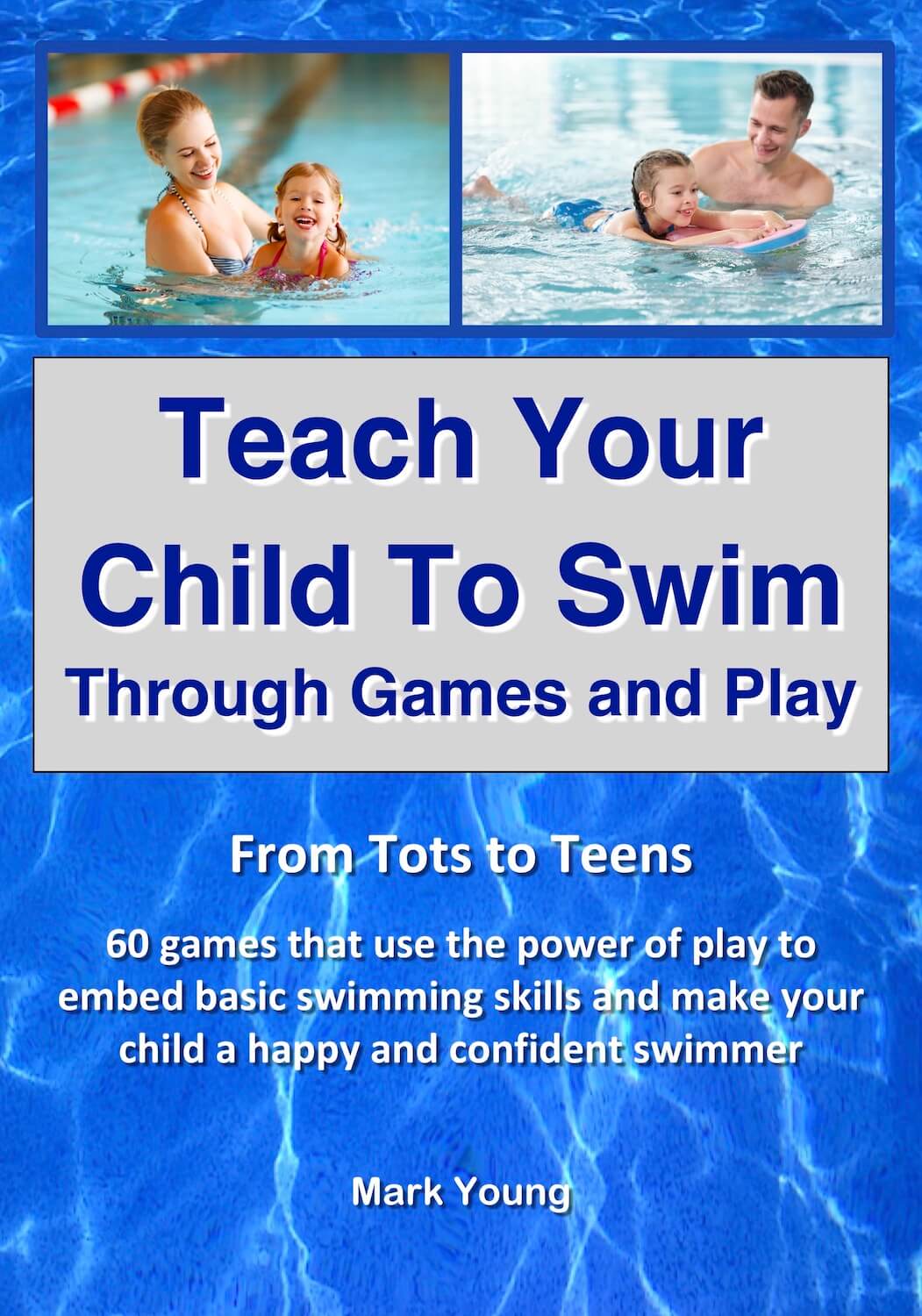 Teach Your Child To Swim Through Games And Play
Teach Your Child To Swim Through Games And Play60 games that use the power of play embed basic swimming skills and make your child a happy and confident swimmer.
$14.99

I am a member of the Amazon Associates Program and I will earn a commission from qualifying purchases at no extra cost to you.


